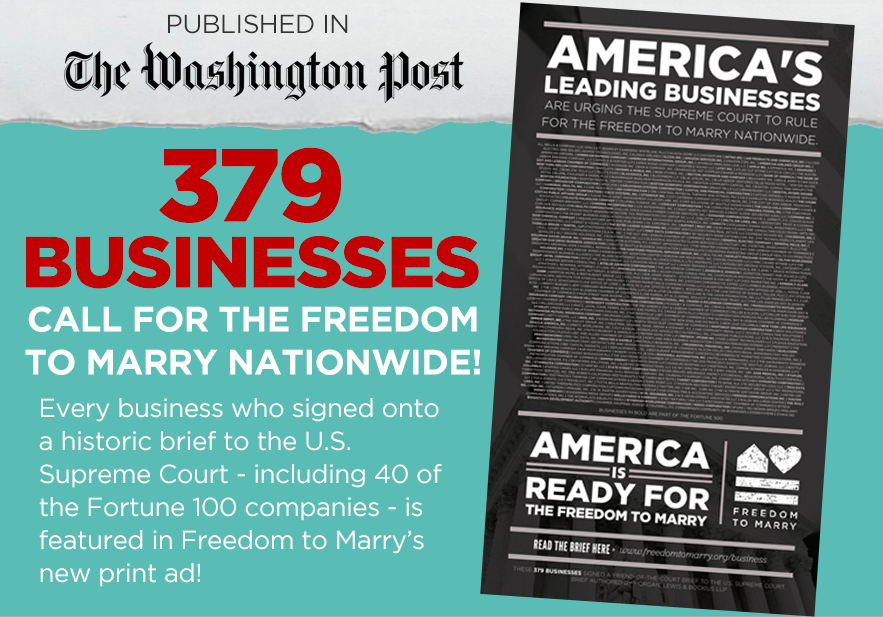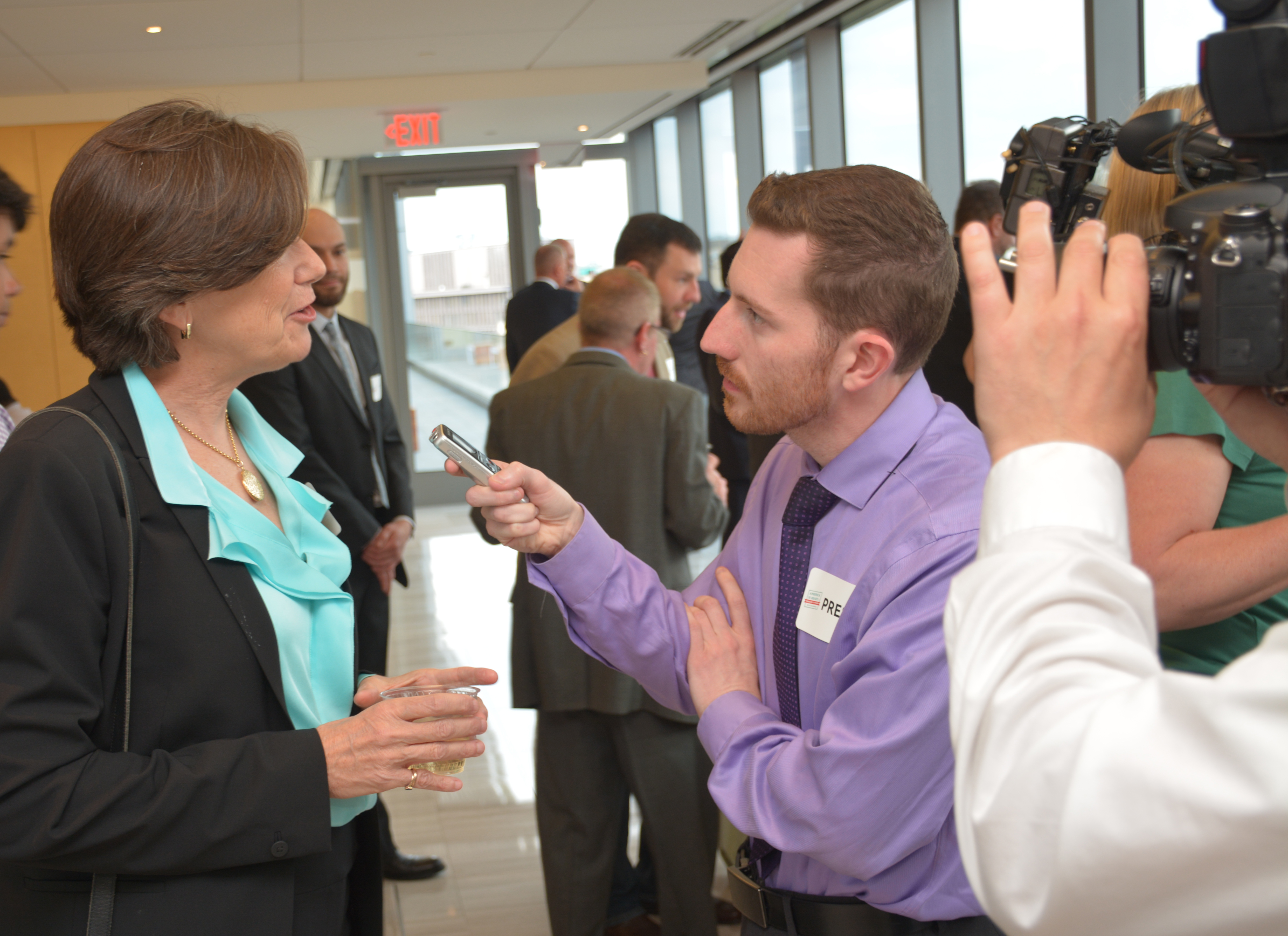Earned Media: Driving the National Narrative
In addition to supporting the work in the states and regionally, Freedom to Marry used earned media to grow support for marriage and to highlight how rapidly it was growing, in many quarters and among many segments of the population. We did this by seeking out poignant stories of couples and especially painful stories of harms to those couples and families who were being denied the freedom to marry. Oftentimes, we'd find stories in our local and regional work that were resonant nationally and we'd pitch them for coverage in national print and broadcast outlets.
- The New York Times, Republicans From the West Give Support for Gay Marriage
- The Atlantic, Here’s What a Same-Sex Marriage Advocate Looks Like in Oklahoma
- TIME Magazine, Gay-Marriage Advocates Eye Conservative Oklahoma for Latest Push
- Washington Post, Same-Sex Marriage Battle Escalates to Force Supreme Court Decision on Constitutionality
- The Huffington Post, In Colorado, the Freedom to Marry Matters to Latino Families
- Politico, GOP’s Alan Simpson Backs Gay Marriage in Ad
- USA Today, GOP's Simpson: 'Live and Let Live' on Gay Marriage
- Bloomberg, Simpson’s Simple Republican Message: ‘If You Love Someone… Marry Them

This Freedom to Marry ad showcasing strong support from 379 companies ran in the Washington Post.
Our communications work intensified when the Supreme Court agreed to take up marriage cases in 2013 and 2015. During both periods, Freedom to Marry did everything possible to secure national media coverage that we thought would make the most compelling case - in the national media and through it to the justices - that the country was ready for national resolution and that there was real harm in the status quo. In close partnership with the legal teams, we worked to secure signers onto key amicus briefs that we thought would be especially compelling for earned media purposes. One strong example: Freedom to Marry helped lead an effort to secure nearly 400 companies to sign onto a business amicus brief. Signers included 40 out of the Fortune 100 companies, along with Super Bowl champion New England Patriots and World Series champions the San Francisco Giants. This business effort garnered significant earned media.
Key Lessons Learned
- You can use small amounts of paid media and leverage them to secure significant amounts of earned media. We knew it would be far too costly to make national media buys that would be seen enough on television to penetrate a market. Thus, we often created television spots that had real news value and did a “national buy” - ran the ad on Sunday television news shows in DC along with cable news shows nationwide - and then pitched the ad for news coverage to top outlets. We did this especially well with our ad featuring former GOP Senator Alan Simpson; with a relatively small ad buy, we were able to get the ad covered in national print media and shown and discussed on national cable news.
- Cultivate relationships with national reporters covering your cause. With the support of media consulting firms, Freedom to Marry put together off-the-record briefings with top Supreme Court and political reporters and columnists for the crucial national outlets - New York Times, Politico, Washington Post, network news stations, NPR, CNN, etc. We often did these over meals at restaurants, where reporters could hear our perspective, ask questions, and have good back and forth. Those “salons” were invaluable, as when the battles got hot, the reporters would often reach out to Freedom to Marry first, for comment or explanation.

Julie Goodridge, named plaintiff in the legal case that brought the freedom to marry to Massachusetts, spoke with reporters at the National Marriage Plaintiffs' Gathering we hosted just before the oral argument in the 2015 Obergefell case, a celebration of the many voices and faces that contributed to the decades-in-the-making victory.
- Be the go-to source of information for reporters. For national movements with multiple state “fronts” in the fight, it is challenging for reporters to stay up to speed on developments. As a result, if you can be the go-to source for information, that can ensure that your group - and your perspective - are quoted more frequently. Freedom to Marry became that resource for reporters coving dozens of legal cases challenging marriage bans in multiple states across the country. We not only provided up-to-date information online on each case, but also aggregated and presented the information for quick reference for reporters.
- Use news hooks creatively to pitch your stories. Reporters are very focused on ensuring news coverage syncs up with what is “hot” nationally. That means that, when your cause isn’t front and center, it’s very important to think creatively of ways to inject it into the prevailing media narrative. We did that in 2012, when Freedom to Marry launched our "Democrats: Say I Do” effort to get a marriage plank in the Democratic National Convention platform. We knew that the nominating process would be undramatic, given that President Obama was running unopposed. And we knew that reporters would be searching for electorally focused stories. As a result, our push to secure a freedom to marry plank in the platform garnered very significant amounts of earned media - on national Sunday morning television shows and in top political media outlets. From reporting after the fact, we know that the effort had - as intended - an impact in speeding along President Obama’s “evolution” on marriage.
- On a limited basis, use earned media to demonstrate your organization’s value-add. Freedom to Marry always prioritized winning over organizational public relations. At the same time, it’s important for an organization’s donors as well as other influential people who are paying interest to the cause to know the role that you are playing. One powerful way to demonstrate that leadership is by working closely with a reporter on an “embargoed” in-depth story, showing the role that you are playing. Freedom to Marry did this on a couple of occasions, none more successful than inviting The Atlantic to have insider’s access into our work on the 2012 ballot campaigns. Molly Ball’s resultant story did a powerful job of showing our leadership over several years in preparing for, and securing, wins at the ballot in 2012.